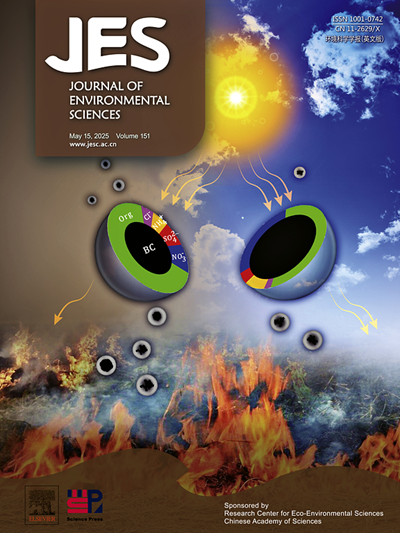Disparities in precipitation effects on PM2.5 mass concentrations and chemical compositions: Insights from online monitoring data in Chengdu
IF 5.9
2区 环境科学与生态学
Q1 ENVIRONMENTAL SCIENCES
引用次数: 0
Abstract
Precipitation plays a pivotal role in wet deposition, significantly affecting aerosol purification. The efficacy of precipitation in removing aerosols depends on its type and the characteristics of the particulates involved. However, further research is necessary to fully understand how precipitation impacts PM2.5 components. This study utilized high-temporal-resolution data on PM2.5, its components and meteorological factors to examine varying responses influenced by precipitation intensity and duration. The findings indicate that increased rainfall intensity and duration enhance PM2.5 and its constituents removal efficiency. Specifically, longer precipitation periods significantly improve PM2.5 purification, especially with drizzle and light rain. Moreover, there is a direct correlation between pre-precipitation PM2.5 levels and its scavenging rates, with drizzle potentially exacerbating PM2.5 pollution under cleaner conditions (≤ 35 µg/m3). Seasonally, the efficacy of removing PM2.5 components varies notably in response to drizzle and light rain. In spring, higher PM2.5 levels after drizzle were primarily due to increased organic carbon concentrations favored by higher relative humidity and lower pH conditions compared to other seasons, conducive to secondary organic aerosol production. Lower wind speeds and higher temperatures further contribute to water-soluble organic carbon accumulation. Daytime and nighttime precipitation exerted differing influences on PM2.5 components, particularly in spring where daytime drizzle and light rain significantly increased PM2.5 and its constituents, notably NO3-, potentially associated with phase distribution changes between gas and aerosol phases in low-temperature, high-RH conditions compared to nighttime. These results propose a dual-impact mechanism of precipitation on PM2.5 and provide scientific basis for designing effective control strategies.

求助全文
约1分钟内获得全文
求助全文
来源期刊

Journal of Environmental Sciences-china
环境科学-环境科学
CiteScore
13.70
自引率
0.00%
发文量
6354
审稿时长
2.6 months
期刊介绍:
The Journal of Environmental Sciences is an international journal started in 1989. The journal is devoted to publish original, peer-reviewed research papers on main aspects of environmental sciences, such as environmental chemistry, environmental biology, ecology, geosciences and environmental physics. Appropriate subjects include basic and applied research on atmospheric, terrestrial and aquatic environments, pollution control and abatement technology, conservation of natural resources, environmental health and toxicology. Announcements of international environmental science meetings and other recent information are also included.
 求助内容:
求助内容: 应助结果提醒方式:
应助结果提醒方式:


